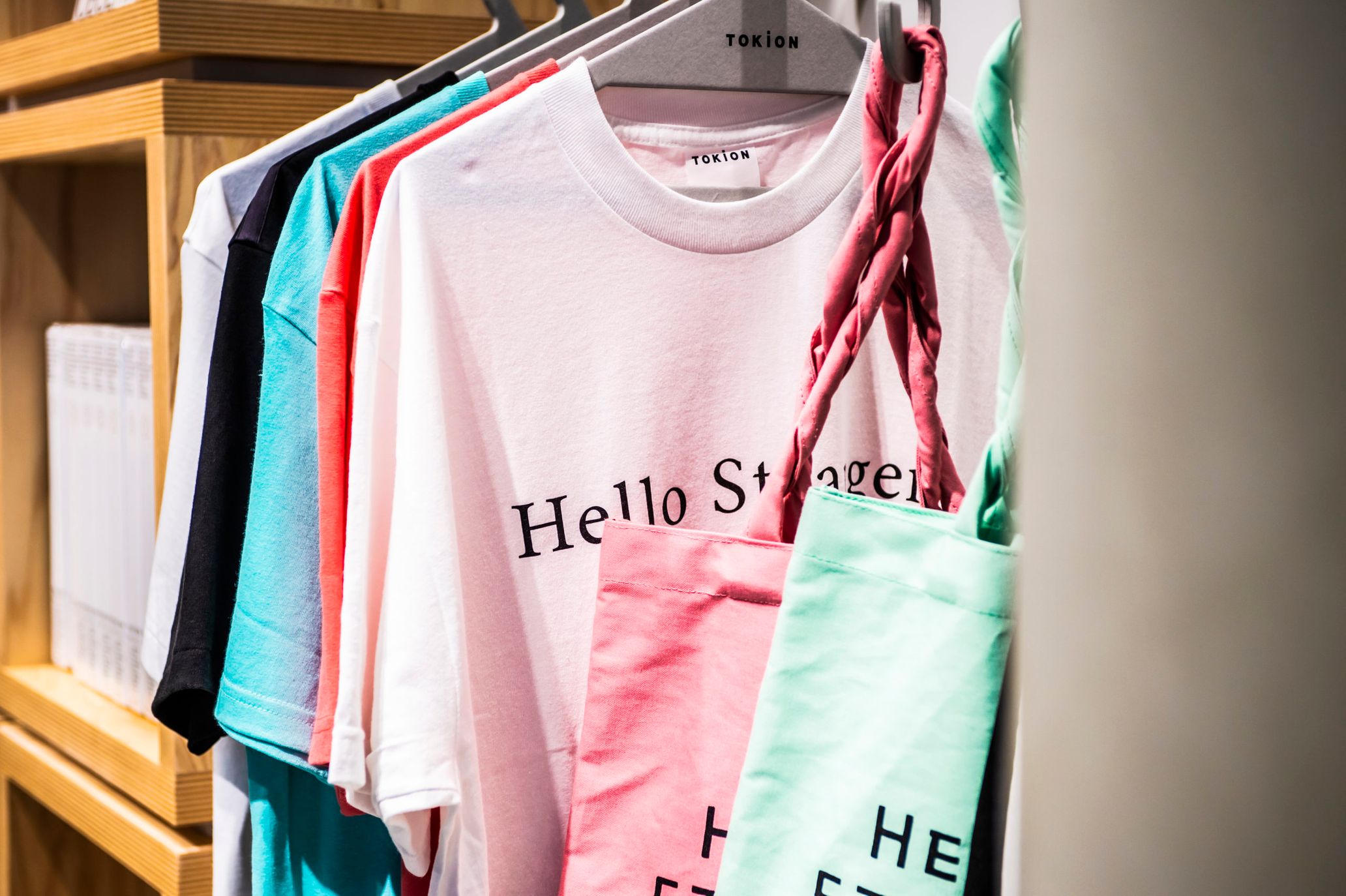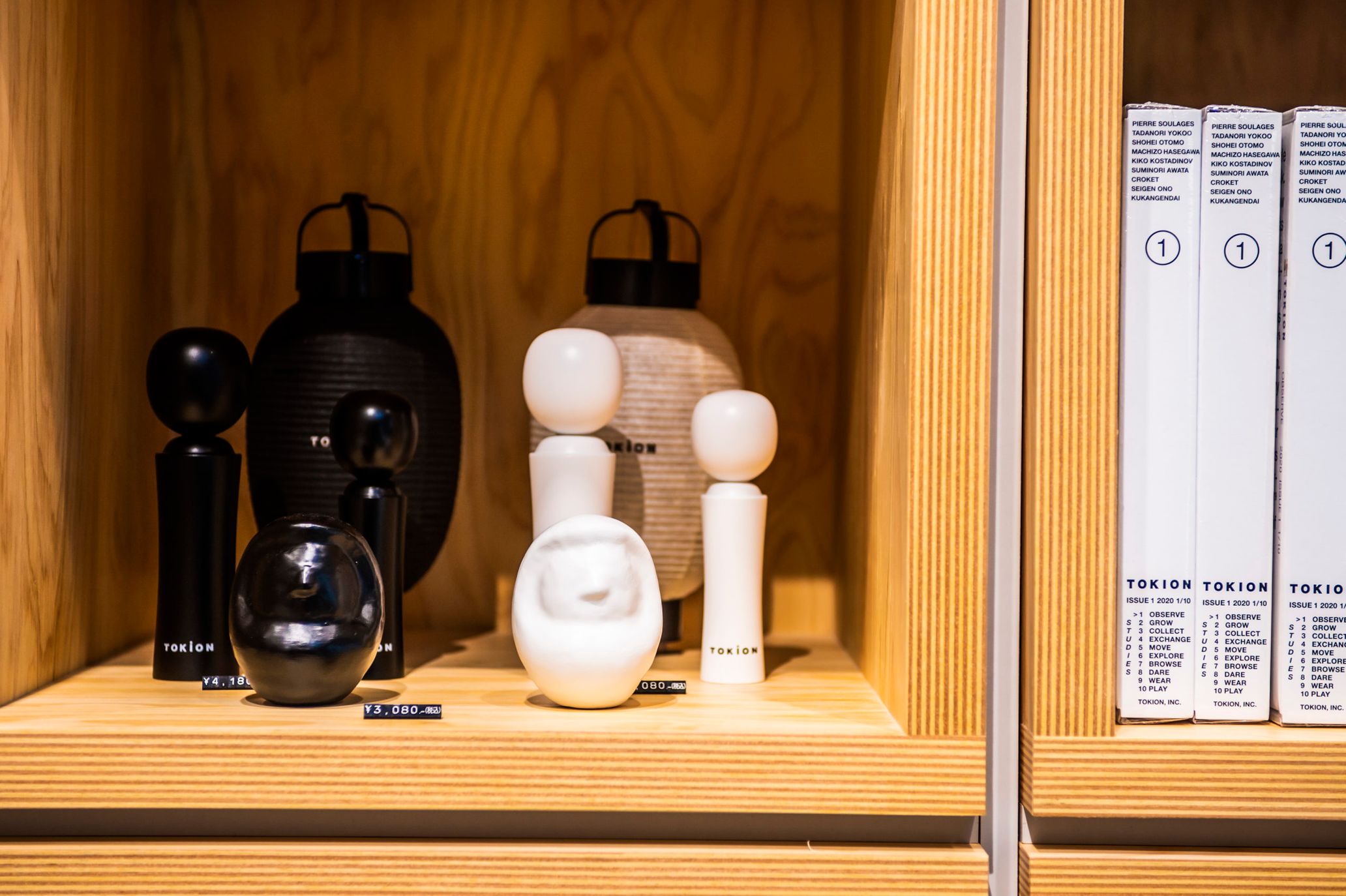The original items on offer at TOKION the STORE feature a lineup of apparel and miscellaneous goods like T-shirts, tote bags, and caps printed with “HELLO, STRANGER!” This embodies the message that they are “For all people with an enduring affection for culture,” which is the concept of the magazine as well.
We are introducing a line associated with the special feature from Vol. 1 of the magazine TOKION entitled “OBSERVE.” For our T-shirts based on the theme of manufacturing Western-style clothing, we incorporated instructions for everyone from the pattern makers to the sewing technicians into the design as-is. For example, the “W20m/m HEMMING” which is written on the cuff are the instructions for taking the hem up, which are inherently not something that can be glimpsed on clothing. The sewing instructions recorded at various places over the pattern were printed graphically through the use of an industrial typeface. Shirts, coats, and more are slated to be introduced in the future as well.
In addition, under our mission statement of “Spreading cutting-edge Japanese culture to the world” we offer a lineup that includes paper lanterns, kokeshi dolls, washcloths, and other items that embody the traditional and modern unique to Japan found in Tokyo, in which cultures from all around the world intermix.
We updated these washcloths with a bandanna pattern. Conventional washcloths feature simple specifications in which they are made from 35cm of material, and just by cutting the top and bottom of the material they do not need to be sewn via specifications like the so-called selvage denim “ears” as this prevents the edges of the material from fraying.
Perhaps it just never occurred to them to sew together the tops and bottoms of the material back in the days when they didn’t have sewing machines, but there is significance in the fact that they were not sewn. Preventing fraying at the edges kept thread cast-offs to a minimum, and came to form a natural fringe through changes over time. Since the seam allowance section is thicker with ordinary sewing it takes longer to dry, but when the raw edges turn to fringe this problem goes away. This carries an exceptionally important significance in terms of offering convenience to impatient Tokyo-ites. It is on these washcloths that TOKION incorporated a bandanna pattern.
The pattern variations come in three patterns: “Dragonfly × Navy blue,” “Bell × Red,” “Pine / bamboo / plum” × Black.” These motifs have meaning as omens of luck and carry superstitious significance. Since long ago, dragonflies were called katchimushi (or winning insect) in Japan, and the military commander Maeda Toshiee of the Warring States period even adorned the front of his helmet with one. Perhaps it will grant your wishes when you’d like to do well on a presentation or pass an exam you’re taking. The bell has long been used as a charm to ward off evil spirits. Nowadays more than ever, when the future is unpredictable and uncertain, there is a desire to wear symbols of safety and security such as charms and talismans to ward off evil spirits. Of course, it goes without saying that the pine, bamboo, and plum motif indicates auspicious happenings and lucky omens.
TOKION gives thought to uniquely Japanese qualities from every angle: from items that give people an impression of said uniquely Japanese qualities in a clear and simple manner, to notions surrounding how items that have become rooted in our daily lives since long ago came to be, their inherent significance, and their significance as good luck omens and in a superstitious sense. As such, TOKION is disseminating items reorganized after its own cutting-edge style out to the world.
Photography Kunihisa Kobayashi







